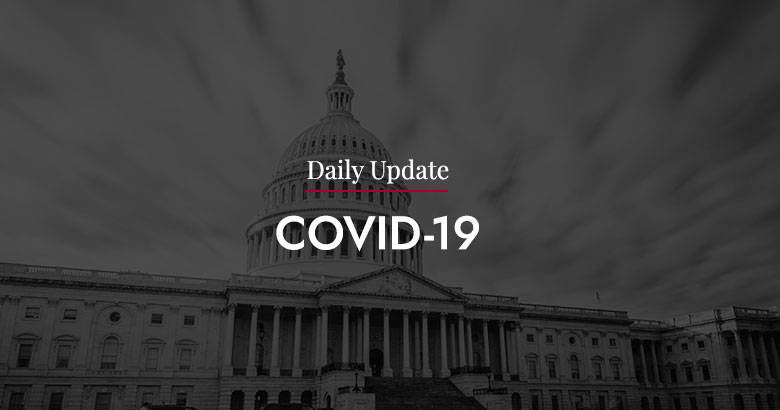Second Round of Economic Impact Payments
Recently the Internal Revenue Service (IRS) and the Treasury Department began delivering a second round of Economic Impact Payments as part of the Coronavirus Response and Relief Supplemental Appropriations Act of 2021 to millions of Americans who received the first round of payments earlier this year.
The initial direct deposit payments began arriving as early as December 29th for some and will continue for the next few weeks. Paper checks were also scheduled to be mailed on December 30, 2020.
Some people may see the direct deposit payments as pending or as provisional payments in their accounts before the official payment date of January 4, 2021.
Here’s what you need to know about these additional payments:
Amount of payment
The IRS has begun making payments of up to $600 to eligible taxpayers or up to $1,200 to married couples filing joint returns. Parents will receive an additional $600 for each dependent child under age 17. Thus, a married couple with two children under 17 will receive a $2,400 payment.
Who is eligible?
U.S. citizens and residents are eligible for a full payment if their adjusted gross income (AGI) is under $75,000 for singles or marrieds filing separately, $112,500 for heads of household, and $150,000 for married couples filing jointly and surviving spouses. The recipient must not be the dependent of another taxpayer and must have a social security number that authorizes employment in the U.S.
Phaseout based on income
For individuals whose AGI exceeds the above thresholds, the payment amount is phased out at the rate of $5 for each $100 of income. Thus, the payment is completely phased out for single filers with AGI over $87,000 and for joint filers with no children with AGI over $174,000. For a married couple with two children, the payment will be completely phased out if their AGI exceeds $198,000.
Payments are nontaxable
The economic impact payment that you receive will not be included in your income for tax purposes. It will not cause you to owe tax or decrease your refund for 2020.
How to get a payment
Most people will not have to do anything to get an economic impact payment. The IRS will calculate and send the payment automatically to those who are eligible. If you’ve filed your 2019 tax return, the IRS will use the AGI and dependents from that return to calculate the payment amount. The credit won’t be allowed if the return doesn’t include a valid identification number (typically, a social security number) for everyone for whom a credit is sought. Thus, for example, a joint return must include valid identification numbers for both spouses to get the full $1,200 credit. A $600 credit is allowed if only one spouse provides a valid identification number, and no credit is allowed if neither spouse does so. The IRS will deposit the payment directly into the bank account reflected on the return.
How to check status of payment
The IRS has developed a web-based tool called Get MyPayment (www.irs.gov/coronavirus/get-my-payment), for individuals to provide banking information to IRS, so that payments can be received by direct deposit rather than by check sent in the mail. The tool includes the date the payment is scheduled to be issued to the individual.
For those who are eligible but don’t receive the payment for any reason, it can be claimed by filing a 2020 tax return. Remember, the Economic Impact Payments are an advance payment of what will be called the Recovery Rebate Credit on the 2020 Form 1040 or Form 1040-SR.
If you have not yet filed for 2019
The due date for 2019 individual income tax returns was July 15, 2020, or October 15, 2020 if an automatic extension of time was requested on Form 4868. Individuals who are required to file a return for 2019 and haven’t done so should file the return as soon as possible. Doing so will help give the IRS time to process and make all resulting economic impact payments before January 15, 2021 (the deadline for processing payments).
If you aren’t required to file
If you receive social security, supplemental security income, social security disability income, railroad retirement, or veterans’ compensation and pension benefits, and you are not required to file a tax return, you do not have to file to receive a payment. The IRS will generate an automatic payment using information from the Social Security Administration and the Department of Veterans Affairs. The payment will be made by direct deposit or paper check, in the same manner as the recipient’s regular benefits.
DISCLAIMER: The WM Daily Update COVID-19, COVID-19 Business Resources and COVID-19 Client News Alerts and other related communications are intended to provide general information on legislative COVID-19 relief measures as of the date of this communication and may reference information from reputable sources. Although our firm has made every reasonable effort to ensure that the information provided is accurate, we make no warranties, expressed or implied, on the information provided. As legislative efforts are still ongoing, we expect that there may be additional guidance and clarification from regulators that may modify some of the provisions in this communication. Some of those modifications may be significant. As such, be aware that this is not a comprehensive analysis of the subject matter covered and is not intended to provide specific recommendations to you or your business with respect to the matters addressed.


